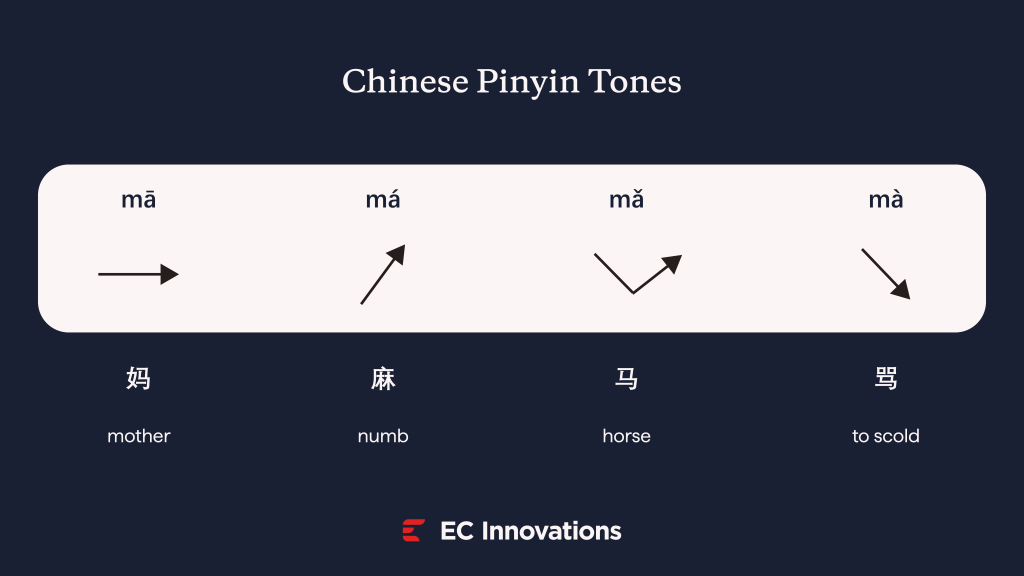Chinese is undoubtedly one of the most widely spoken languages in the world, with over a billion native speakers and growing importance in global business, diplomacy, and pop culture (hello, C-dramas and hotpot!), It’s no surprise more and more people are asking:
“What’s the best way to learn Chinese?”
The benefits of learning Chinese go way beyond impressing your friends. It can open doors to travel experiences, job opportunities, deeper cultural appreciation, and meaningful relationships. Plus, if you’re working with Chinese clients or expanding into Asia, Chinese language skills will be a definite game-changer.
But let’s be honest, Chinese isn’t exactly known for being easy. Between the characters, tones, and cultural differences, it’s easy to feel lost before you even begin. In this guide, we will dive into how to learn Chinese fast and effectively, using strategies that actually work, without burning you out!
How to Learn Chinese Fast and Effectively
1. Know Your Why! and Set Mini Goals
First things first: Why do you want to learn Chinese?
Is it for business meetings or a trip to Beijing? Or watching a C-drama without subtitles?, Knowing your “why” fuels your motivation. Once you’re set in that direction, you can start breaking your goal down into smaller steps.
Instead of saying “I want to be fluent,” try saying something along the lines of “By the end of this week, I want to learn how to introduce myself in Chinese.” You can trust us: clear goals = clear progress.
2. Focus on Pronunciation Early On
Mandarin Chinese has four main tones—plus a neutral tone, which is sometimes called the “silent tone.” This means that words can completely change their meaning based on the tone.
You really should learn to distinguish mā (妈 – mom) from mǎ (马 – horse), unless you want some rather embarrassing conversations. The sooner you know the tones and pronunciation, the better. Apps like Yoyo Chinese and Pimsleur break it down in a super approachable way. If you nail the tones early on, the rest of your learning journey will feel a whole lot smoother.

3. Use Spaced Repetition for Vocabulary
Spaced repetition is your best ally for building your vocabulary. Apps like Anki or Pleco help you review characters and words at optimized intervals, making them stick in your long-term memory, and if you’re a visual learner who likes games and structure, HelloChinese might be your best friend.
Focus on higher-frequency words first; studies have shown that the top 1,000 Chinese words cover daily communication to the tune of about 80%.
4. Learn Characters in Context
At first glance, the Chinese language may seem challenging, but it is actually quite simple, as each character often comes with an embedded meaning.
Even the more complex characters have elements from simpler characters, which form the basis of their composition; these are called radicals. When you learn the most frequently used radicals like 氵(water) or 火(fire), you can start making sense of the language. Stop attempting to memorize characters in isolation; focus on learning them in context, through phrases, narratives, or signs. This method will not only be enjoyable, but also beneficial to your mind!
5. Speak, Even If You Think You Can’t
This one’s big: don’t wait until you’re “ready” to start speaking. Just go for it.
Even if you only know five words, try stringing them together in a conversation. Apps like italki or Tandem let you practice with native speakers, often for free or at a very low cost. You’ll mess up (everyone does), but that’s how you learn. You’ll gain confidence, fix pronunciation, and actually use the words you’ve learned.
Even 15 minutes of speaking daily can dramatically improve your fluency.
6. Surround Yourself with Chinese
Can’t fly to China? No problem. Bring China to you.
Switch your phone to Chinese, follow Chinese influencers on social media, watch Chinese content creators on YouTube, maybe even binge C-dramas on iQIYI or Netflix. This is one of the best ways to learn Chinese. This kind of digital immersion helps your brain absorb vocabulary and sentence structures naturally.
7. Build a Daily Routine
Consistency beats intensity. A short, focused 30-minute session daily is far more effective than a 3-hour cram once a week. Create a routine that fits your schedule; maybe in the mornings practice vocabulary flashcards, in the afternoons listen to podcasts, and complete your day with a little reading before bed.
Apps like FluentU or ChineseClass101 help you structure your learning path.
8. Think in Chinese (Yes, Really)
It might sound weird, but try thinking in Chinese, even for basic stuff: “我饿了” (wǒ è le – I’m hungry) or “今天是星期几?” (What day is it today?). The goal isn’t to be perfect, it’s to get used to how Chinese is structured.
Over time, your brain stops translating and starts flowing with it.
9. Don’t Fear The Grammar
Chinese grammar is actually simpler than many other languages. No verb conjugations, no plural nouns, not even gender rules. That said, word order matters, and measure words can be tricky because there are different words for counting books, people, and animals.
Here, resources like the Chinese Grammar Wiki provide excellent explanations with examples.
Just take it step by step; you’ve got this.
10. Track Progress and Celebrate Milestones
Chinese, no doubt, is a complex language to learn! Every achievement, no matter how big or small, counts.
Whether you read your first paragraph without peeking at the translation, understood a dialogue from a drama without subtitles, or recognized characters on a street sign? Celebrate it! Positive reinforcement keeps you motivated when zeal dips.
And if you ever feel like giving up, just remember that Chinese is often thought to be one of the most difficult languages in the world, so every step forward is a huge achievement.
Tools & Resources to Help Learn Chinese
There are many fantastic tools available, but what matters most is choosing the ones that fit your learning style and using them regularly.
Here’s your Chinese learning toolbox. Grab what fits your style:
Best Apps to learn Chinese
- Pleco: The gold standard Chinese-English dictionary with handwriting input.
- HelloChinese: Interactive lessons + speech practice.
- Duolingo: Great for quick daily practice, but don’t rely on it alone.
Flashcards & Writing
- Anki: Smart flashcards with spaced repetition.
- Skritter: Learn to write characters like a pro.
Courses
- Yoyo Chinese: Bite-sized videos for learners who like structure.
- ChineseClass101: Audio + video lessons, plus cultural tips.
Reading & Listening
- The Chairman’s Bao: Graded news articles by HSK level.
- Du Chinese: Fun stories with audio and pinyin.
- FluentU: Real-world video clips with interactive captions.
Speaking Practice
- italki: Find a tutor or a language partner.
- HelloTalk: Talk to native speakers and get real-time feedback.
How Long Does It Take to Learn Chinese?
The million-yuan question.
The truth? It depends. If you’ve studied another Asian language, you might pick things up quicker. If you’re totally new, it’ll take time, but of course, not forever.
According to the U.S. Foreign Service Institute, it takes roughly 2,200 hours for an English speaker to become fluent in Mandarin. That’s about two to three years of consistent study. But here’s the thing: you don’t need fluency to get results.
You can reach basic conversational Chinese in as little as 6–12 months if you study consistently and immerse yourself as much as possible. You’ll be able to order food, chat with locals, and get around with confidence.
And for businesses looking to bridge the language gap while learning, EC Innovations’ Chinese Translation Services can ensure professional communication without waiting years for fluency.
Conclusion
So, how do you learn Chinese fast and effectively?
Start with a clear goal, build small habits that will lead you to your goal and along the way, use tools and resources that would make this whole experience enjoyable. Focus on getting a grip on tones early, and reinforce them through speaking, thinking and media. And most importantly, make it fun.
Whether you’re learning Chinese for business, travel, or personal growth, EC Innovations can support you with professional Chinese Translation Services while you build fluency. Contact us for expert help today.
加油!(Jiā yóu!) – You got this.





